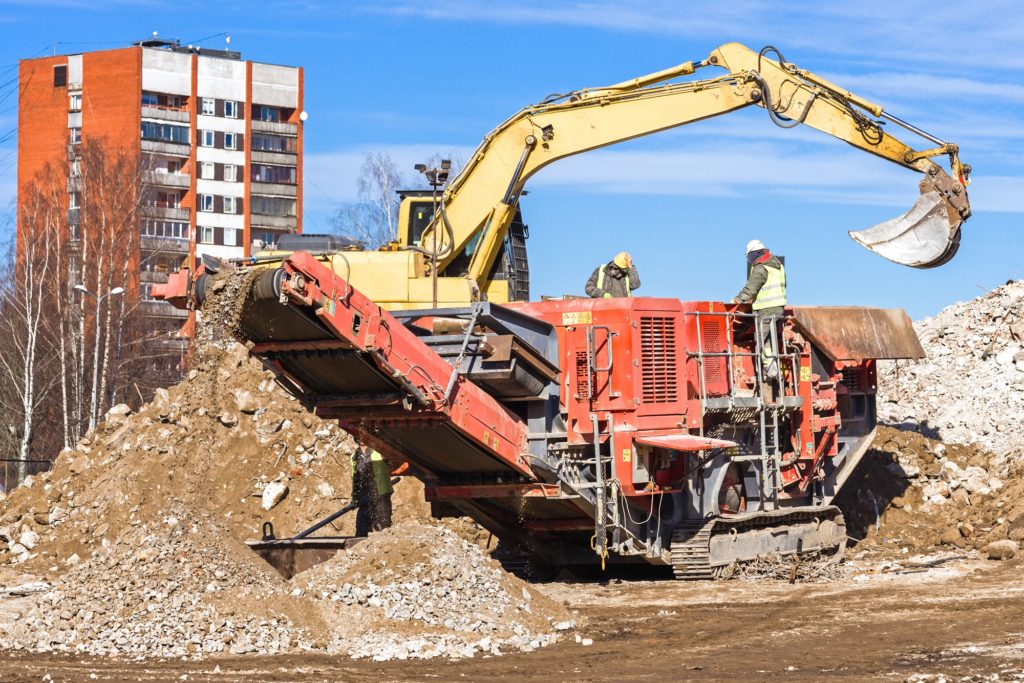Exploring The Use of Technology in the Construction Industry

Aside from human innovation and imagination, one major factor that drives construction is the use and implementation of new technologies and new techniques to get the job done. If it weren’t for new innovations spilling into the construction industry, we’d likely still be digging trenches with shovels and limited to building one-story structures.
Over the decades, however, great engineering minds have put their forces together and improved the way we build and the way we manage construction sites. We’ve talked about human’s innate drive to build in previous posts, so we thought we’d focus on how the construction industry has changed and improved thanks to new technology. Some of these systems, of course, have yet to be fully used across the board but still contribute to construction’s continuous advancement.
Construction technology is defined as the collection of innovative tools, machinery, modifications, software, etc used during a construction phase of a project and that advances field construction methods and equipment. Today this technology is breaking through to construction sites at very high rates, changing the way that construction sites are run and the way that laborers conduct their work.
1. Moving from Manual To Mechanization
One of the first changes that revolutionized the way that construction worked. The advent of hydraulic and pneumatic devices changed the game. This led to the ability to move earth, dirt, rocks, and avoid doing the labor manually. Mechanization refers to the process of shifting from working largely or exclusively by hand and switching to doing the job with heavy machinery.
Early steps in mechanization would improve construction time, efficiency, and safety. It maximized resources and used the labor of the workers in a more effective way. In the 20th century, mechanization improved even further with the emergence of cherry pickers, concrete mixers, cranes, and power tools. Then there was the internal combustion engine. This replaced hand shovels, wheelbarrows, and the good old donkey. The ability to build elevators and sophisticated scaffolding also allows for building upward.
2. Computer-Supported Design
Many construction sites today still operate in a traditional paper and pencil arrangement. This, of course, still works and is quite effective for those that know the job and can operate without it. For many large-scale projects, computer-aided design has contributed to a new way of operation. CAD, as it is often known, refers to the software used by architects, engineers, or project managers that create drawings or illustrations of buildings. Engineers and architects use this software and tool in a different way. For architects, CAD becomes important in the design process and allows for planning with 2-D and 3-D models. A construction manager might use CAD to simplify blueprints or provide precise measurements.
3. Mobile Devices
Mobile devices have not only changed our personal lives, how we communicate with our loved ones, and how we interact with news, media, and the devices we carry in our pockets, they have also improved communication and real-time improvements in construction sites. Software and mobile solutions allow construction managers to better manage and coordinate all aspects of a site. When it comes to project managers, using smart devices to communicate and make changes can help with on-site communication. Foremen can keep track of day-to-day changes, performance, setbacks, or other conditions and record them into a smart device. Because most software will be cloud-based, this allows changes to documents, files, schedules, and other management tools to be updated in real-time. With the right software, these devices are synced with every other member of the crew that needs this information. This technology helps project managers keep things on schedule or keep important updates, which ultimately improves site efficiency, safety, and productivity.
4. AI and Machine Learning
While most construction sites are not yet at the point where they have their own robots running around fetching the right tools or supervising for errors, the use of artificial intelligence on sites is a reality. Many construction firms are not using data to improve decision-making, productivity, improve job site safety, and more. In some instances, robots and artificial intelligence are being used to monitor and look for errors. Even drones and rovers have been used to photograph and scan the construction site with utmost accuracy.
5. Virtual Reality
Many training and equipment operator training is looking at using a lot more virtual reality scenarios to improve their training. Using virtual reality to prep and train new employees can be cost-effective and improve safety training. Various other industries have also looked to virtual reality as a way for preliminary training and introduction of safety standards.
Constructing the Future One Structure at a Time
Technology, smart devices, and the internet have really revolutionized the way we operate day-to-day. At the same time, it is changing the way we work. Here at Constructors, Inc, we don’t have work robots fetching our tools, but we are fascinated with the improvement in machinery and technology on-site. Efficiency and communication on the job is a big part of what we do. We strive to have only high standards of excellence when it comes to construction management and the final product. It’s always fun to see the way the world is turning and keep an eye on the tools and mechanisms that might make our job better and safer. If you’re looking for a reliable contractor in the New Mexico area, call us today!